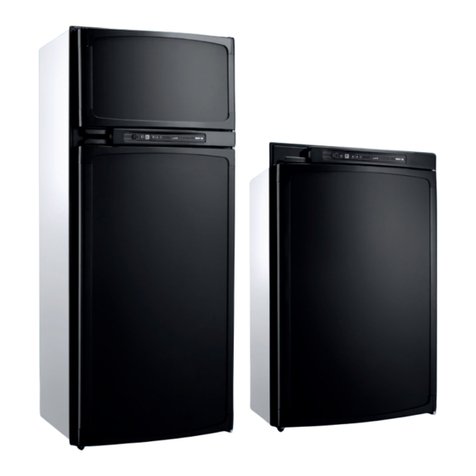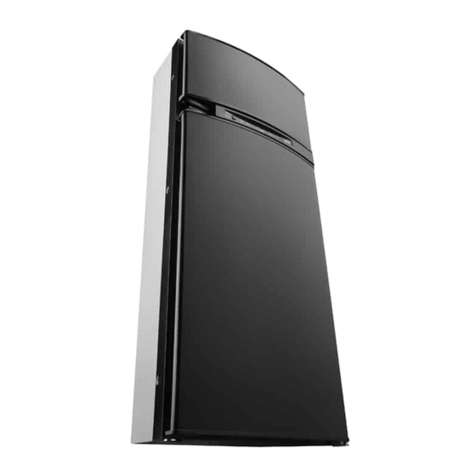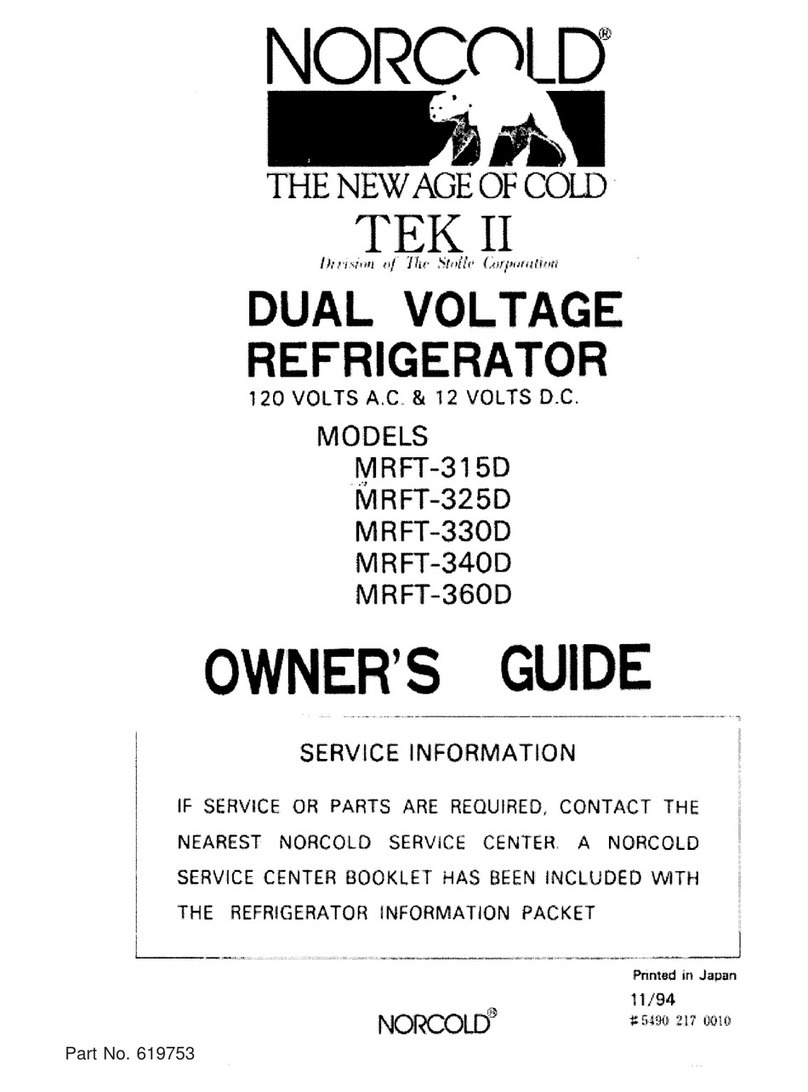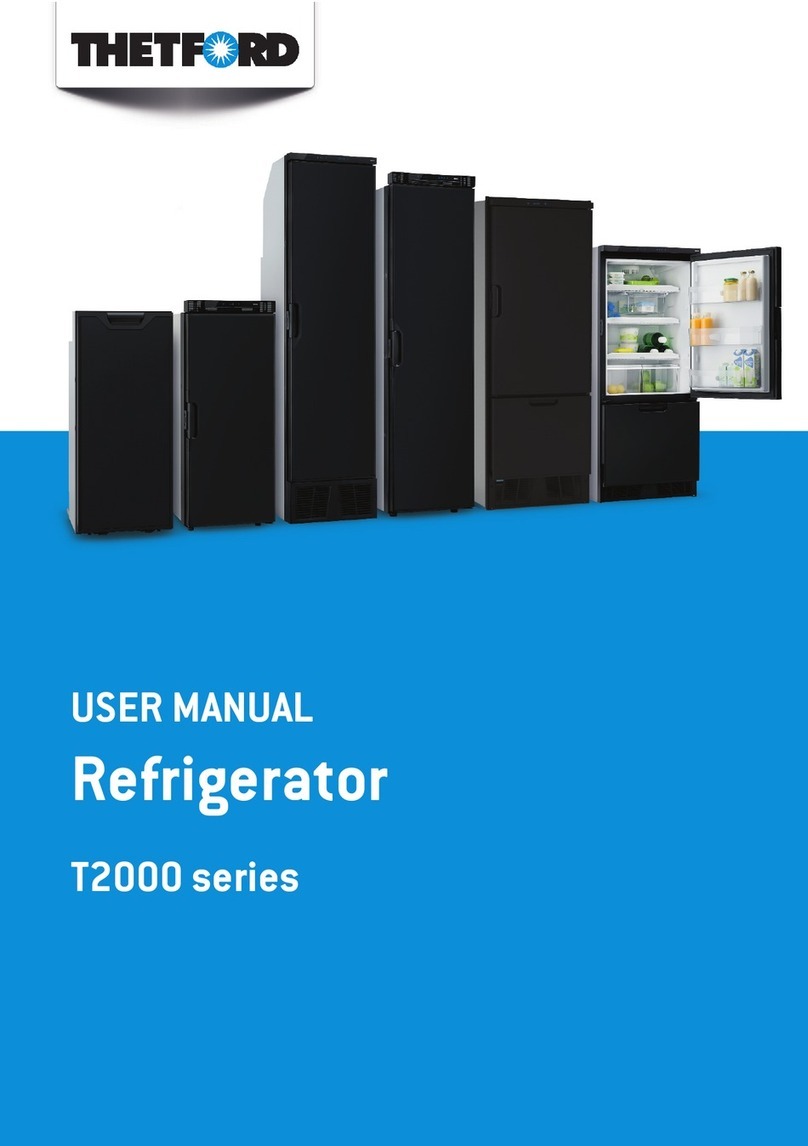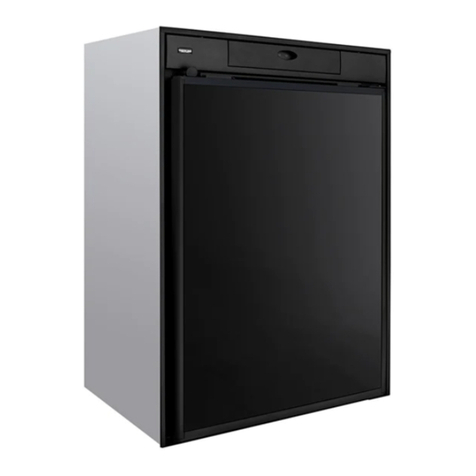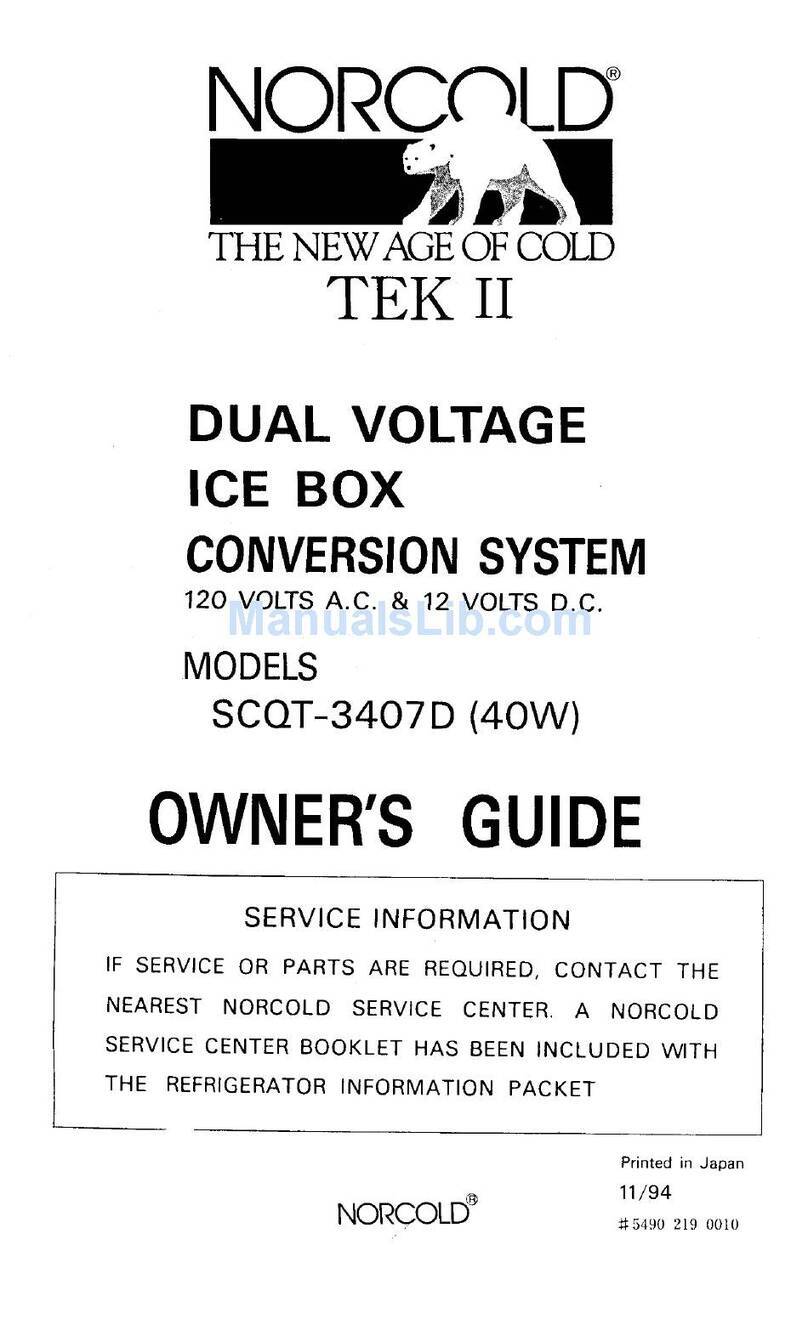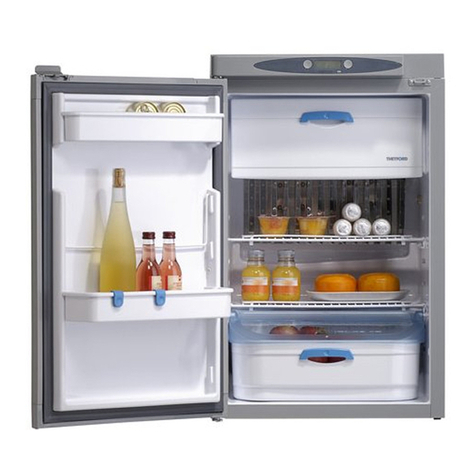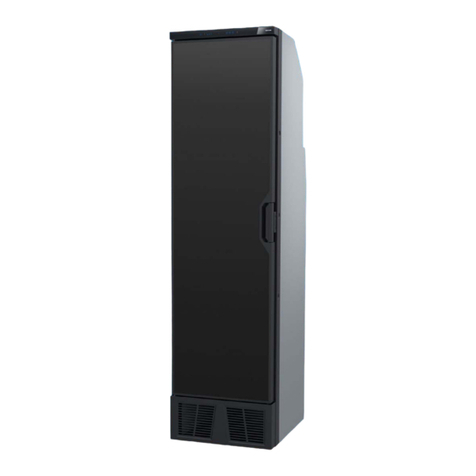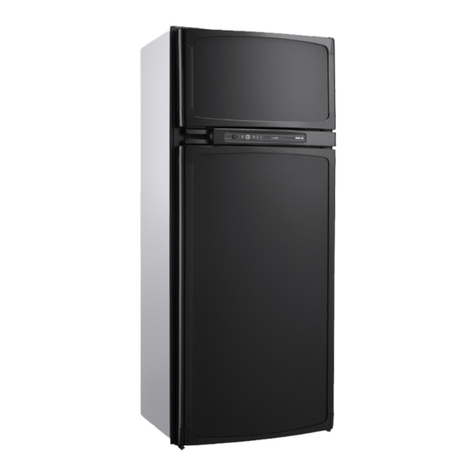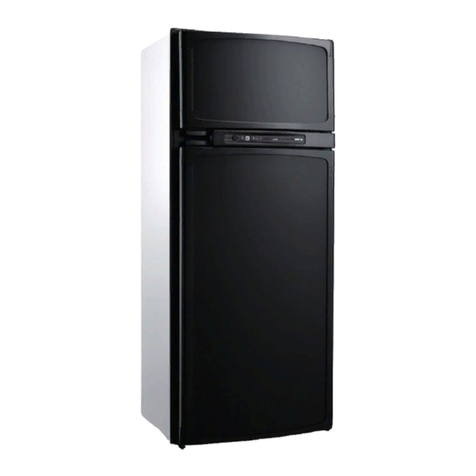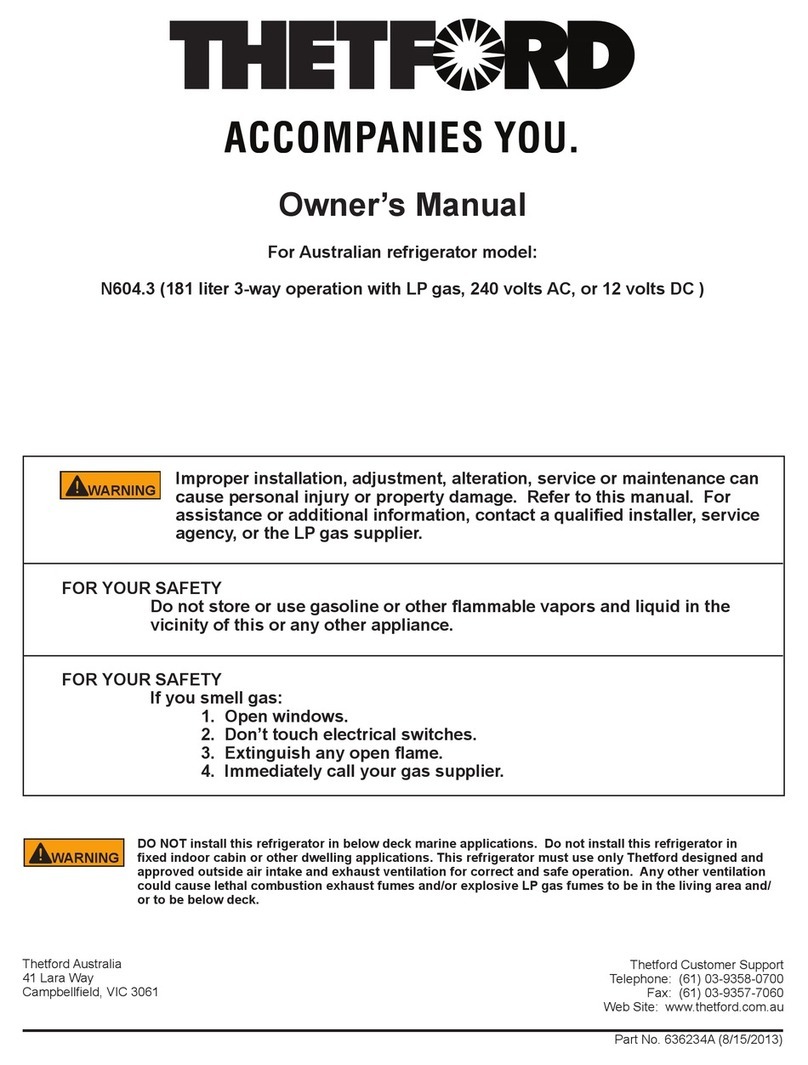
2 - Service Manual N301 Model
Safety Instructions
Introduction
This Service Manual supplies information for the experienced
repair technician. The repair technician should have working
knowledge of the operation of an absorption refrigerator sys-
tem and should have basic knowledge of LP gas and electrical
systems.
Read and understand the “Installation and Owner’s Manual”,
all service procedures, cautions and warnings before doing any
service work on the refrigerator. If you are unable to resolve
the problem by using this Service Manual, technical service
support is available at (61) 03-9358-0700.
Only use genuine Thetford replacement parts on the refrigera-
tor. Generic parts do not meet Thetford’s specifications for
reliability, performance, and safety and will void the Thetford
Limited Warranty.
Safety Awareness
Read this manual carefully and understand the contents before
you install and operate the refrigerator.
Be aware of possible safety hazards when you see the safety
alert symbol on the refrigerator and in this manual. A signal
word follows the safety alert symbol and identifies the danger
of the hazard. Carefully read the descriptions of these signal
words to fully know their meanings. They are for your safety.
WARNING: This signal word identifies a
hazard, which if ignored, can cause serious per-
sonal injury, death, or much property damage.
CAUTION: This signal word identifies a haz-
ard, which if ignored, can cause small personal
injury or much property damage.
WARNING:
■This refrigerator is equipped to use only propane gas
and can not be changed to use any other fuels (natural
gas, butane, etc.).
■Incorrect installation, adjustment, changes to, or main-
tenance of this refrigerator can cause personal injury,
property damage, or both.
■Obey the instructions in this manual when installing the
intake and exhaust vents.
■Do not install the refrigerator directly on carpet. Put the
refrigerator on a metal or wood panel that extends the
full width and depth of the refrigerator.
■Propane gas can cause a fire or an explosion that can
result in property damage, personal injury, or death. Do
not smoke or create sparks while doing any work on the
propane gas supply system. Do not use an open flame
to examine the gas supply piping or fittings for leaks.
■To avoid possible propane gas leaks, always use two
wrenches to tighten or loosen the gas supply line con-
nections.
■Make sure the electrical installation conforms to all
applicable codes. See the “Certification and Code
Requirements” section of the “Installation and Owner’s
Manual”.
■Disconnect both the AC and DC power sources before
doing any maintenance work on the refrigerator.
■Do not bypass or change the refrigerator’s electrical
components or features.
■Do not spray liquids near electrical outlets, connections,
or the refrigerator components. Many liquids conduct
electricity which can cause a shock hazard, electrical
shorts, and in some cases fire.
■The refrigerator cooling system is under pressure.
Do not try to repair or to recharge a defective cooling
system. The cooling system contains sodium chromate.
Breathing certain chromium compounds can cause can-
cer. The cooling system contents can cause severe skin
and eye burns, and can ignite and burn with an intense
flame. Do not bend, drop, weld, move, drill, puncture, or
hit the cooling system.
■Storing flammable materials behind or around the refrig-
erator creates a fire hazard. Do not use the area behind
the refrigerator to store flammable materials (e.g. gaso-
line and cleaning supplies)
■Do not remove the round ground prong from the refrig-
erator AC power cord. Do not use a two prong adapter
or extension cord on the AC power cord.
■A circuit overload can result in an electrical fire if
the wires and/or fuse sizes are not correct. Use only
the wire and fuse sizes listed in the “Installation and
Owner’s Manual”.
■To prevent child entrapment, make sure all shelf retain-
ers are correctly fastened and remove the doors before
disposing of the refrigerator.
CAUTION:
■The rear of the refrigerator has sharp edges and cor-
ners. To prevent cuts or abrasions when working on the
refrigerator, be careful and wear cut resistant gloves.
■Make sure all fasteners and connections are tight.


